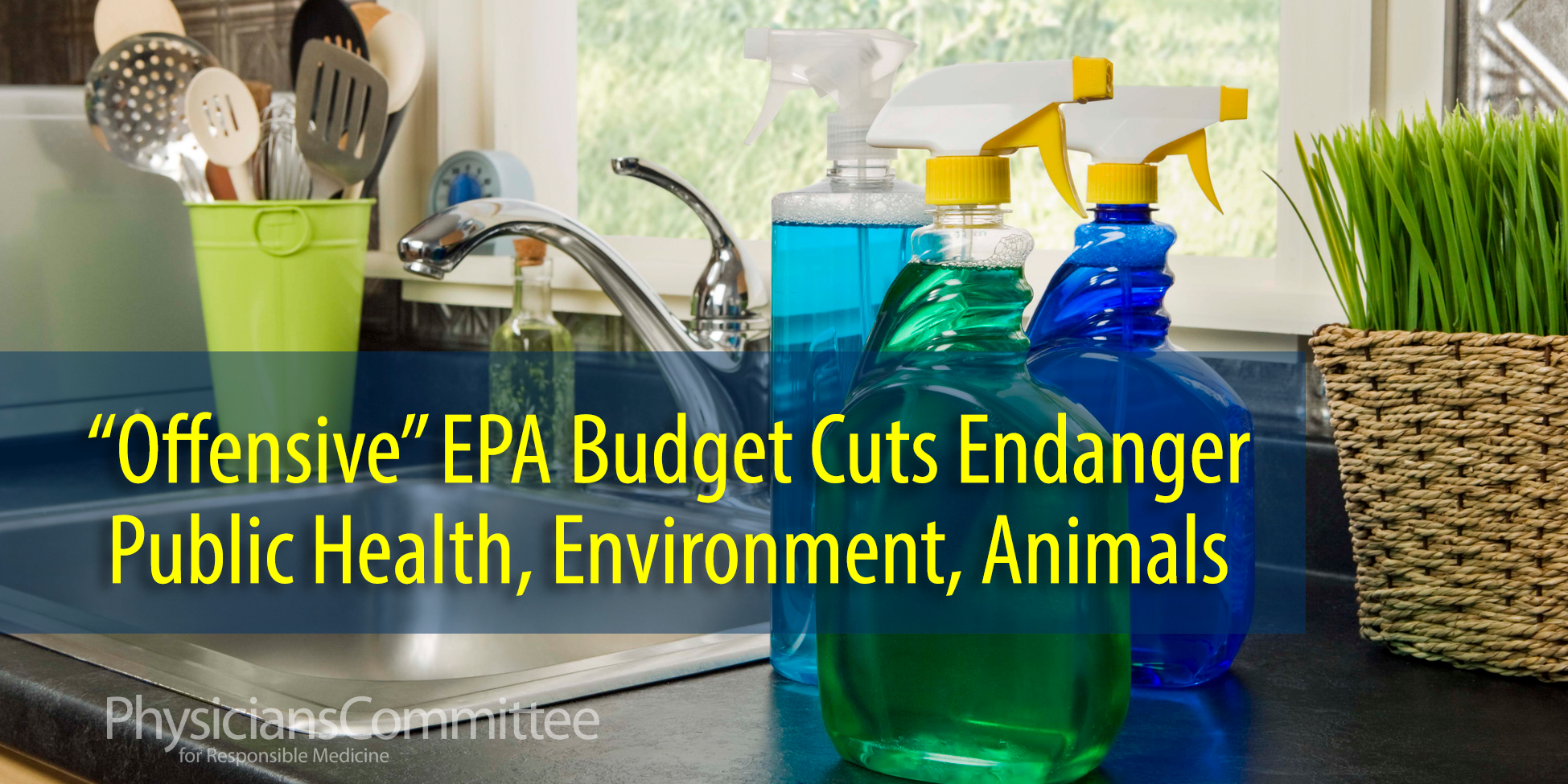‘Offensive’ EPA Budget Proposal Cuts EPA’s Research Capabilities and Endangers Public Safety

Yesterday, both Democratic and Republican senators criticized the administration’s FY2018 budget proposal for the U.S. Environmental Protection Agency, which is planning to slash the EPA’s Chemical Safety for Sustainability research program by 30 percent, a $27.4 million cut.
Groundbreaking research to develop 21st-Century, nonanimal chemical assessment methods is at risk. Amazing examples include advanced robots that can screen thousands of chemicals at once, 3-D human livers that can test how humans metabolize pesticides, and a virtual embryo that predicts how chemicals will affect unborn children.
Sen. Tom Udall (D-N.M.), a sponsor of the 2016 Lautenberg Chemical Safety Act for the 21st Century, denounced plans to cut funding to the Office of Research and Development, calling the proposed budget “offensive.”
"I’m glad to hear you [EPA Administrator Scott Pruitt] say you support robust implementation of TSCA," Udall said. "Yet this proposal cuts programs that are vital to TSCA, such as the Office of Research and Development—cut in half—and core agency functions like enforcement. We can’t just build a wall around the TSCA office and expect it will perform."
When the Lautenberg Act passed Congress and was signed into law last year, stakeholders—including nonprofit organizations, labor advocates, and the chemical industry—celebrated. The new law gave the EPA important new powers—and responsibilities—to assess and manage chemical risks. The EPA must assess the tens of thousands of chemicals in the environment, starting with the most dangerous. It must affirm that new chemicals entering the market will be safe for their intended use. And it must consider the risks of chemicals on sensitive populations such as young children, and the risks of mixtures of chemicals.
Recognizing that our current test methods, mostly based on animals, are not up to this task, the authors of the Lautenberg Act required that the EPA and the chemical industry reduce and replace animal tests, and prioritize the development of new test methods and strategies that do not use animals. As required by the law, the EPA is currently drafting a strategic plan to develop nonanimal test methods that will help it assess chemical risks, for publication by June 2018.
The EPA must also prioritize from the thousands of chemicals in the environment to determine which are the most dangerous, for further study and regulation. With its Endocrine Disruptor Screening Program for the 21st Century, the EPA demonstrated how new tools can be used successfully. It has screened more than 1,800 chemicals using a set of in vitro rapid tests in combination with computer prediction algorithms, focusing government and private resources on high priority chemicals and saving tens of thousands of animals.
As it develops these groundbreaking tools, the EPA is leading the world in making data about how chemicals cause toxicity publicly available for researchers, industry, and the general public to use. In the past 10 years, the National Center for Computational Toxicology had made data on hundreds of thousands of chemicals publicly available. This means that as the EPA conducts its own research, it spurs more research at our nation’s universities, speeding progress to replace outdated animal tests with more human-relevant methods.
The EPA needs the research being conducted by the Chemical Safety for Sustainability research program and the National Center for Computational Toxicology in order to meet the responsibilities Congress gave it when it passed the Lautenberg Act. We urge EPA Administrator Scott Pruitt to maintain funding for these vital programs in its FY2018 budget to ensure continued protection of public health, the environment, and animals.







